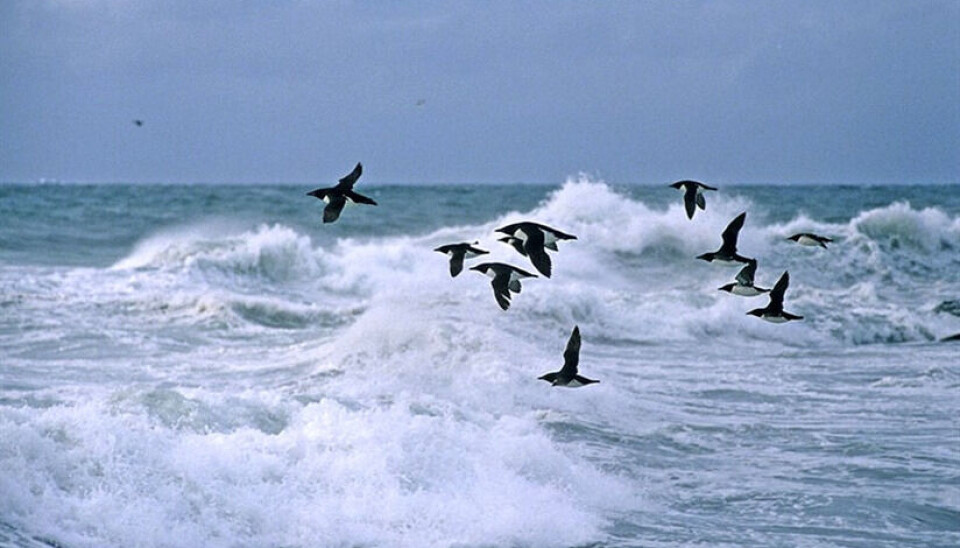THIS ARTICLE/PRESS RELEASE IS PAID FOR AND PRESENTED BY NINA - Norwegian Institute for Nature Research - read more

Are storms killing seabirds?
Researchers have investigated how severe winter storms may impact the seabird community and eventually lead to seabird mass mortality.
Each winter, the North Atlantic Ocean is the stage for numerous cyclones, the most severe ones leading to seabird mass-mortality events called “winter wrecks”.
During these, thousands of emaciated seabird carcasses are washed ashore along European and North American coasts. Winter cyclones can therefore shape seabird population dynamics by affecting survival rates as well as the body condition of surviving individuals and thus their future reproduction.
However, most often the breeding areas of impacted seabirds and the causes of their deaths remain unclear.
Five species – 1,500 individual tracks
Researchers have now assessed cyclone (atmospheric pressure ≤105 hPa, wind speed >120 km/h) exposure to a seabird community in the North Atlantic through a study of little auks, Atlantic puffins, common guillemots, Brünnich’s guillemots and black-legged kittiwakes.
They coupled winter tracking data generated by the SEATRACK program for approximately 1,500 individuals of these five key species with meteorological data on cyclone locations, and subsequently explored the energetic consequences of different cyclonic conditions for the birds.
The aim of the study was to test the hypothesis that cyclones dramatically increase seabird energy expenditure.
Less chance to feed during cyclones
The analyses revealed that high intensity cyclones impacted birds from all studied species and breeding colonies, but especially those aggregating in the Labrador Sea, the Davis Strait, in waters around Iceland and in the Barents Sea.
Surprisingly, the results from the energetic models also suggested that cyclonic conditions do not increase seabird energy requirements directly. Given that the assumptions in the model are correct, i.e., that the birds reduce the time spent flying and diving during cyclones, this implies that the birds die because of the unavailability of their prey and/or their inability to feed sufficiently during cyclones.
The study provides essential information concerning seabird cyclone exposure, which is important during a time with marked cyclone regime changes due to global warming.
Reference:
Clairbaux et al. North Atlantic winter cyclones starve seabirds, Current Biology, vol. 31, 2021. DOI: 10.1016/j.cub.2021.06.059

This article/press release is paid for and presented by NINA - Norwegian Institute for Nature Research
This content is created by NINA's communication staff, who use this platform to communicate science and share results from research with the public. NINA is one of more than 80 owners of ScienceNorway.no. Read more here.
See more content from NINA:
-
How will climate change affect lakes worldwide?
-
White-tailed sea eagles are breeding in Ireland again after more than a century
-
Could a tunnel help wild reindeer in Norway?
-
Norwegian white-tailed sea eagles are helping to rebuild a lost population in Ireland
-
1 in 4 freshwater species are at risk of extinction: "It's not too late to take action"
-
Insects prefer cold winters with lots of snow




































